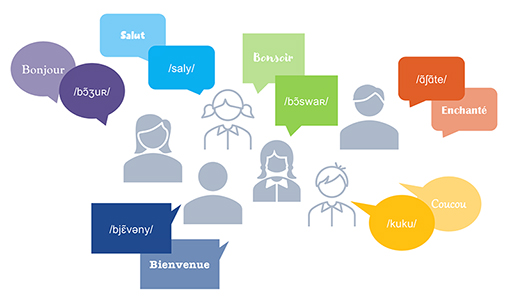2 Training your ear
When you start learning French, you will learn how to recognise and produce some unfamiliar sounds. Which sounds these are will depend on the languages you are already familiar with. For example, if your first language is English, you might initially find it tricky to pronounce the French sound /y/ which often corresponds to the letter ‘u’ in French. Listen to the audio clip below to hear examples:
Transcript: Audio 2 The letter ‘u’
However, if you speak other languages, you may already be familiar with that sound. In German, for example, the sound /y/ usually matches the letter ‘ü’, like in the word Übung.
In any case, you shouldn’t worry about which sounds you might find tricky in French: any beginners’ French course will contain many activities to help you practise pronunciation. For example, in Week 4 of this course, you found out that some of the diacritics in French, like accents or the cedilla, are used to indicate different pronunciations of the same letters. You will learn how to distinguish and pronounce these. As a taster, the next activity demonstrates the kind of pronunciation activity you will encounter.
Activity _unit6.2.1 Activity 2 The letter ‘e’
Used on the letter ‘e’, the acute (é) and grave (è) accents depict two different sounds in French. This activity will help you to distinguish them.
First, listen to the three sounds spoken out loud in these examples:
Example _unit6.2.1
a.
e
b.
é
c.
è
The correct answer is a.
a.
e
b.
é
c.
è
The correct answer is b.
a.
e
b.
é
c.
è
The correct answer is c.
a.
e
b.
é
c.
è
The correct answer is c.
a.
e
b.
é
c.
è
The correct answer is b.
a.
é
b.
è
The correct answer is b.
a.
é
b.
è
The correct answer is a.
Discussion
The first word was très, which means ‘very’. The second word was été, which means ‘summer’. It contains the sound of é used twice.

